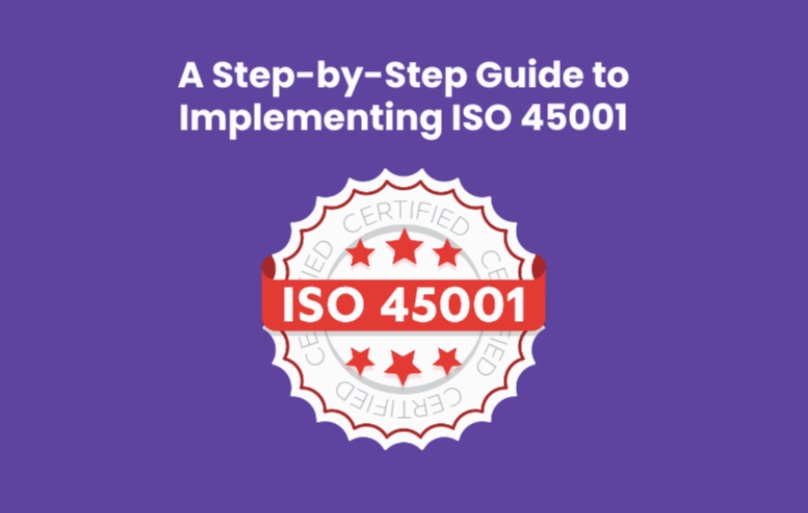Ensuring safety in the workplace is of utmost importance. It not only protects employees but also safeguards a company's reputation and financial stability. ISO 45001 is a globally recognised standard for Occupational Health and Safety Management Systems (OHSMS). Implementing ISO 45001 can help organisations create safer working environments, reduce accidents, and enhance overall operational efficiency. In this blog, we will delve into the ISO 45001 requirements and guide you through the process of implementing it.
Table of Contents
- Understanding ISO 45001
- Getting Leadership Buy-In
- Establishing Roles and Responsibilities
- Conducting a Gap Analysis
- Creating an Implementation Plan
- Employee Training and Awareness
- Risk Assessment and Hazard Identification
- Implementing Controls
- Documenting Procedures and Policies
- Monitoring and Measurement
- Internal Auditing
- Management Review
- Continuous Improvement
- External Certification
- Conclusion
Step 1: Understanding ISO 45001
Before diving into the implementation process, it's crucial to have a solid understanding of ISO 45001. This standard outlines a framework for identifying, controlling, and mitigating workplace health and safety risks, emphasising a proactive approach to preventing accidents and illnesses through continuous improvement.
Step 2: Getting Leadership Buy-In
Successful implementation of ISO 45001 requires commitment from top management. It's essential to get leadership buy-in to ensure that resources, time, and support are allocated to the project. Leadership support sets the tone for the entire organisation and reinforces the importance of safety.
Step 3: Establishing Roles and Responsibilities
It is crucial to define roles and responsibilities clearly within the organisation and assign a dedicated team to implement and maintain ISO 45001. This team should include individuals who understand the ISO 45001 Requirements and are passionate about promoting a safe workplace.
Step 4: Conducting a Gap Analysis
A gap analysis involves assessing your current health and safety practices against the ISO 45001 requirements. Create an action plan by identifying areas for improvement and prioritising them.
Step 5: Creating an Implementation Plan
Based on the gap analysis, develop a comprehensive implementation plan. This plan should outline specific goals, timelines, and the allocation of resources. Ensure that the plan aligns with your organisation's strategic objectives.
Step 6: Employee Training and Awareness
Your employees play a vital role in implementing ISO 45001. Provide training to ensure that everyone understands new OHSMS procedures and their roles in maintaining a safe workplace. Promote awareness and encourage employees to actively participate in safety initiatives.
Step 7: Risk Assessment and Hazard Identification
One of the core ISO 45001 requirements is identifying and assessing workplace risks and hazards. Conduct a thorough risk assessment to pinpoint potential safety issues. This involves assessing tasks, equipment, and processes that may endanger employee well-being.
Step 8: Implementing Controls
Once risks and hazards are identified, develop and implement controls to mitigate them. This may include changing work processes, upgrading equipment, or providing personal protective equipment (PPE). Ensure that controls are effective and regularly reviewed for improvement.
Step 9: Documenting Procedures and Policies
Accurate documentation is essential for ISO 45001 compliance. Create clear and concise policies, procedures, and work instructions that detail how your organisation will meet the standard's requirements. These documents should be accessible to all employees.
Step 10: Monitoring and Measurement
Implement a system for ongoing monitoring and measurement of safety performance. This may involve regular inspections, incident reporting, and data analysis. Use this information to track progress and identify areas for improvement.
Step 11: Internal Auditing
Regular internal audits help ensure that your OHSMS is functioning effectively and in compliance with ISO 45001 requirements. Conduct audits at planned intervals to assess conformity and identify corrective actions if necessary.
Step 12: Management Review
Top management should review the OHSMS regularly to ensure its continued suitability, adequacy, and effectiveness. Use these reviews to make informed decisions about improvements and resource allocation.
Step 13: Continuous Improvement
ISO 45001 encourages a culture of continuous improvement. Actively seek opportunities to enhance your health and safety practices. Regularly review and update your OHSMS to reflect changes in your organisation and industry best practices.
Step 14: External Certification
While ISO 45001 compliance is voluntary, achieving certification demonstrates your commitment to health and safety to stakeholders, customers, and employees. To become certified, you must undergo an external audit conducted by a certified third-party auditor.
Conclusion
Implementing ISO 45001 is a comprehensive process that requires dedication, leadership support, and a commitment to continuous improvement. By following these steps, your organisation can create a safer workplace, reduce accidents, and meet the ISO 45001 requirements. Remember that ISO 45001 is not just about compliance but also about protecting the well-being of your employees and enhancing your organisation's reputation. Safety should always be a top priority, and ISO 45001 provides a structured framework to achieve it.


No comments yet